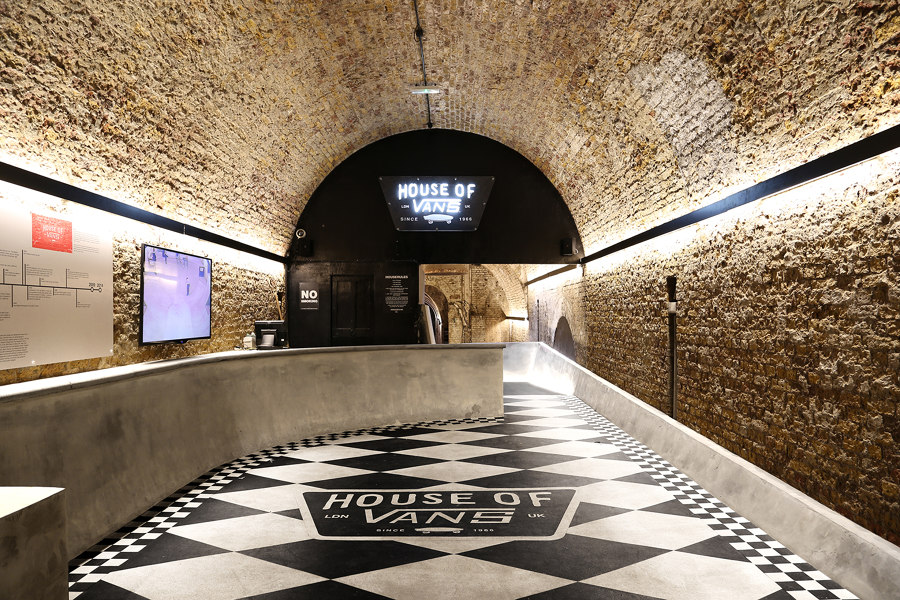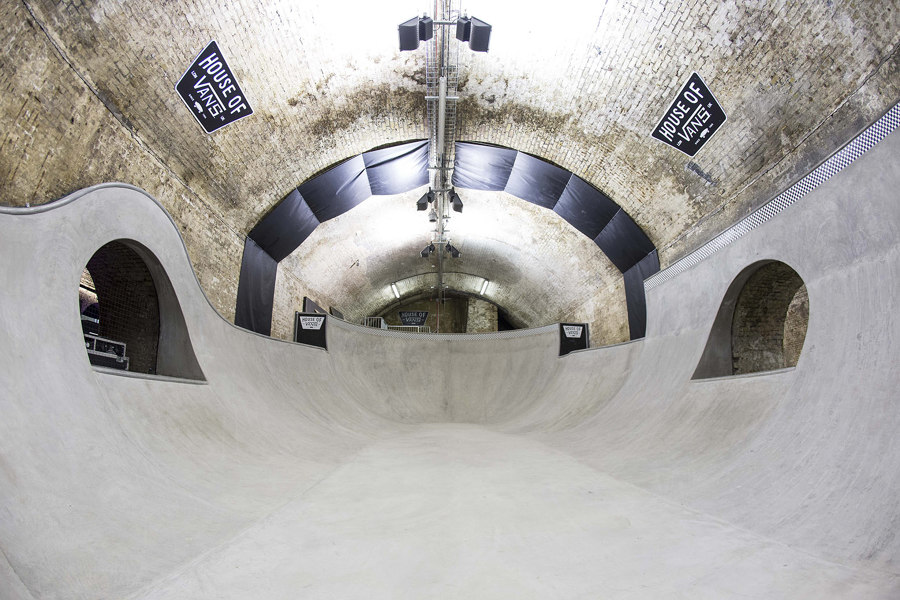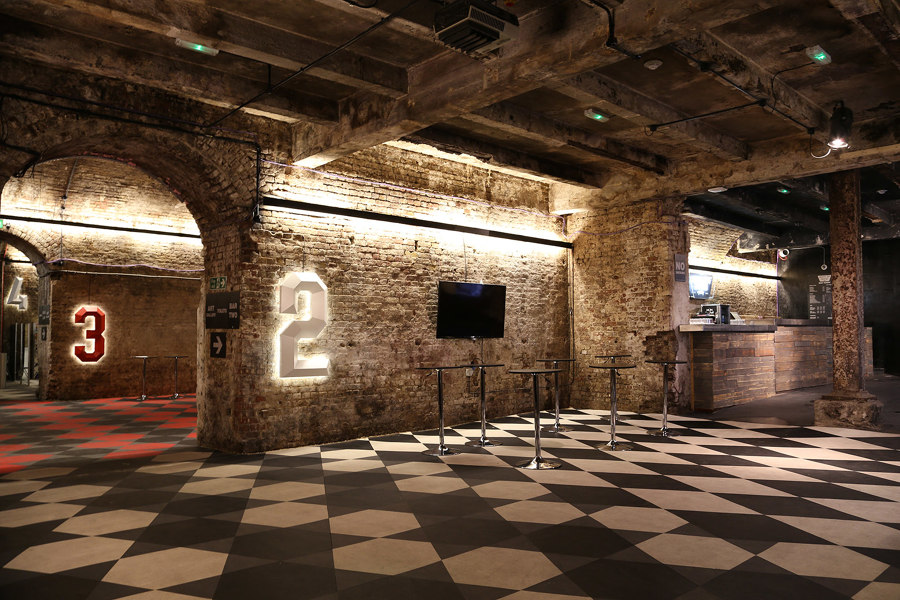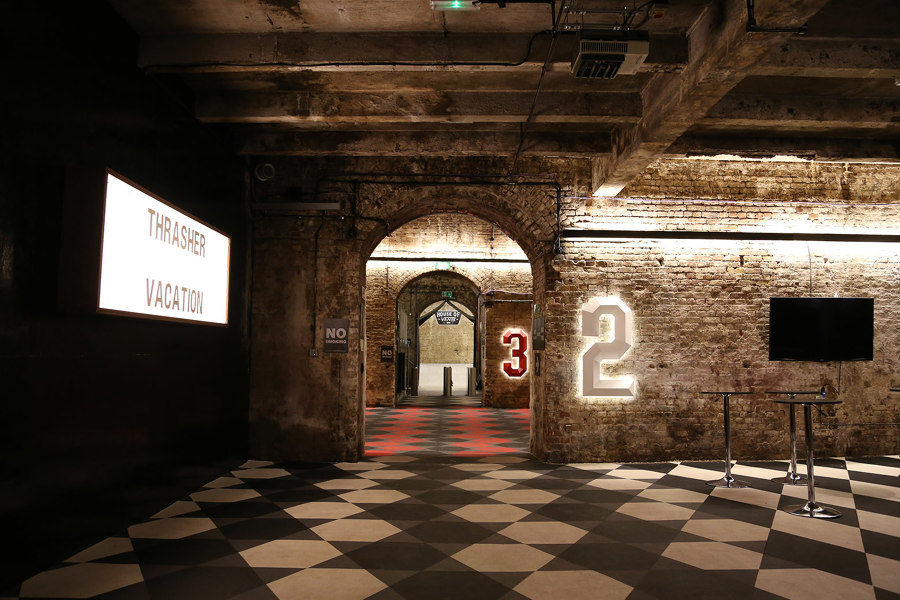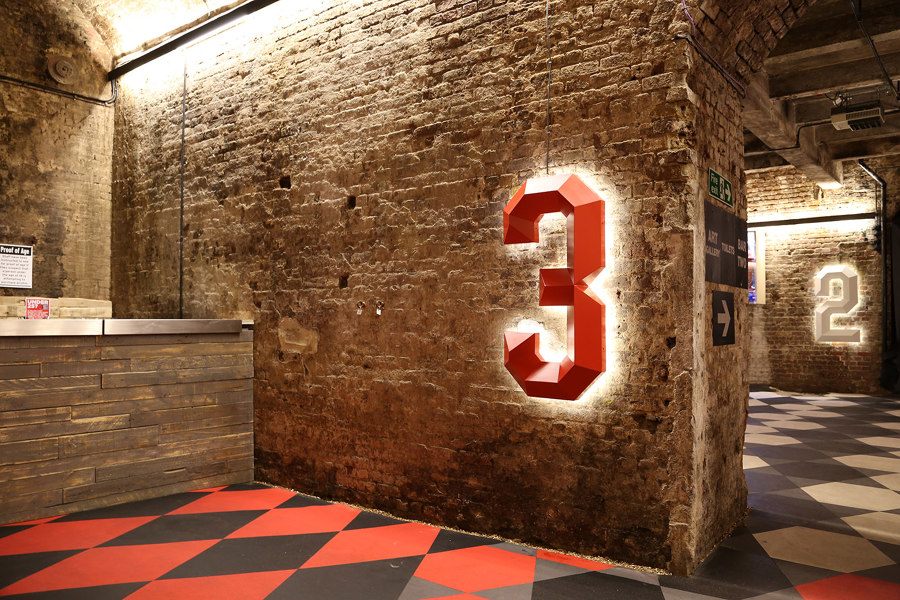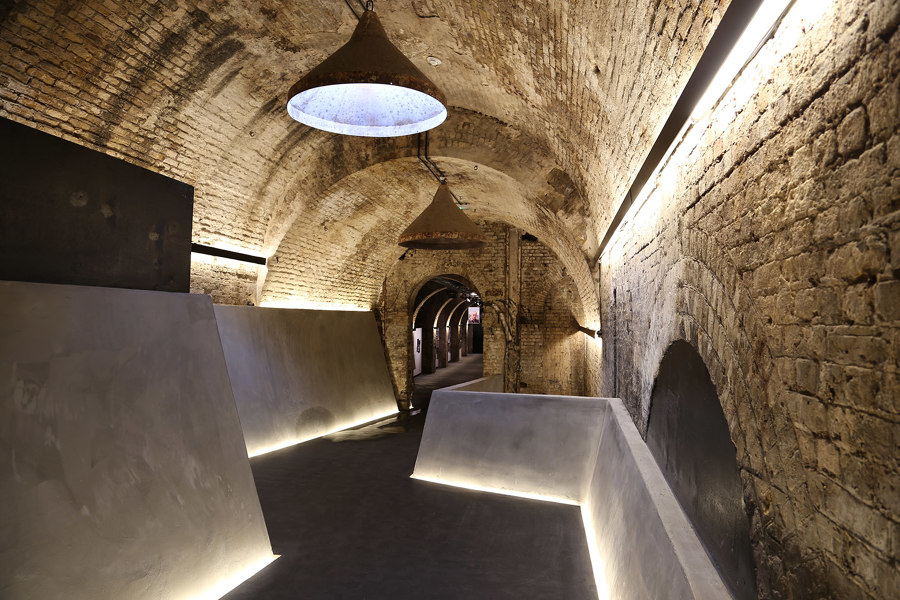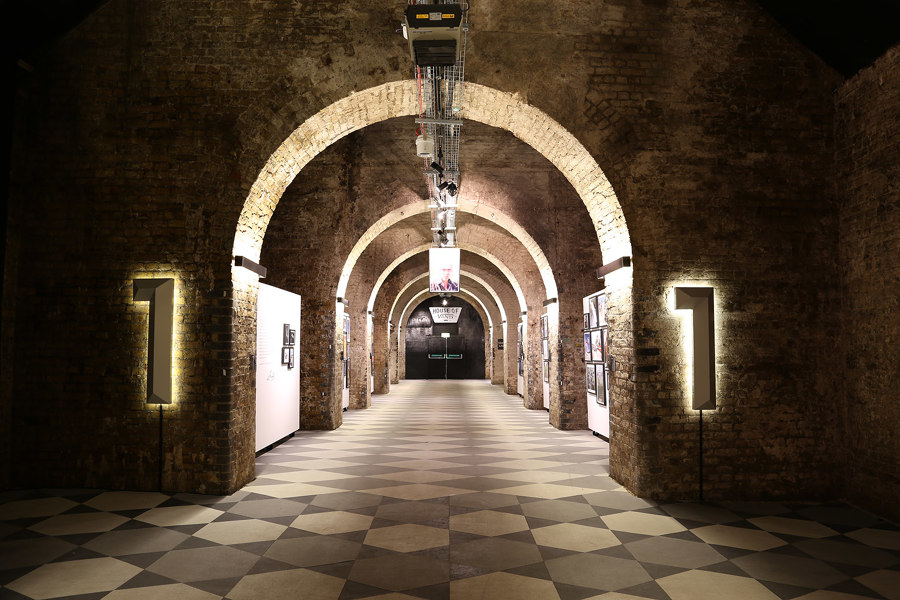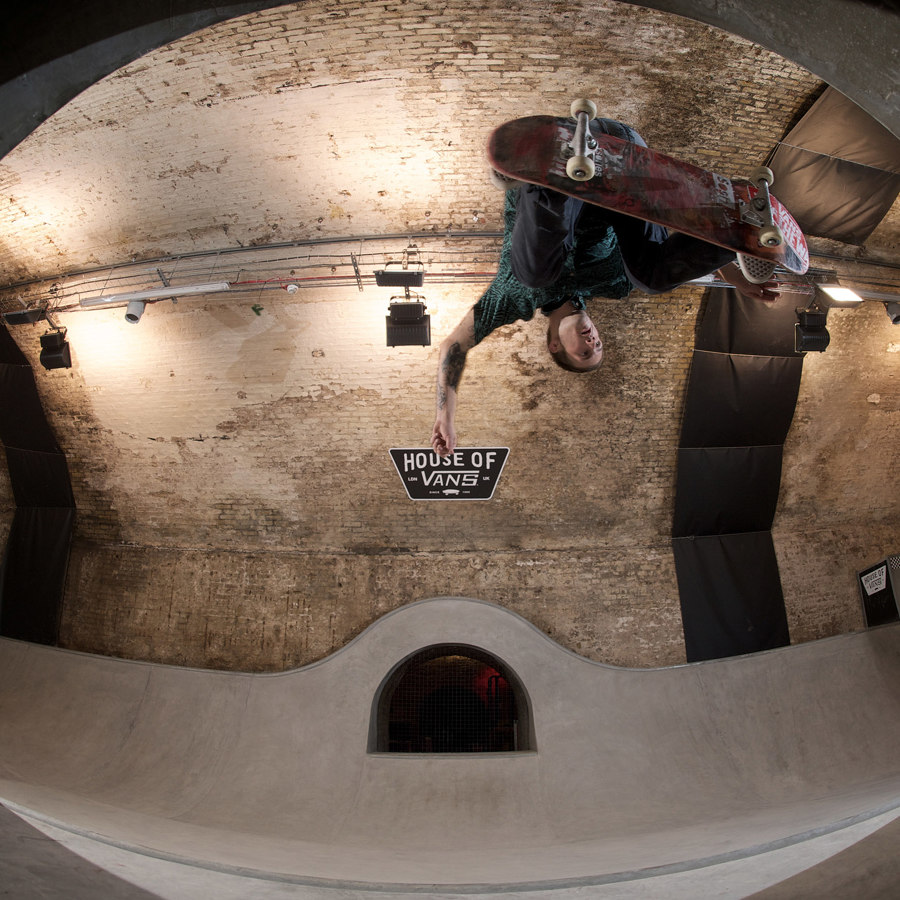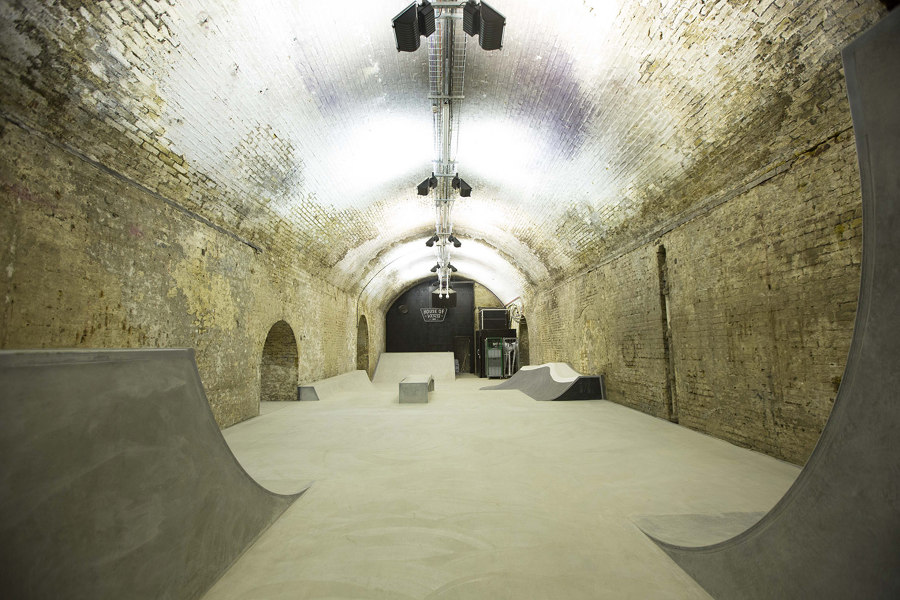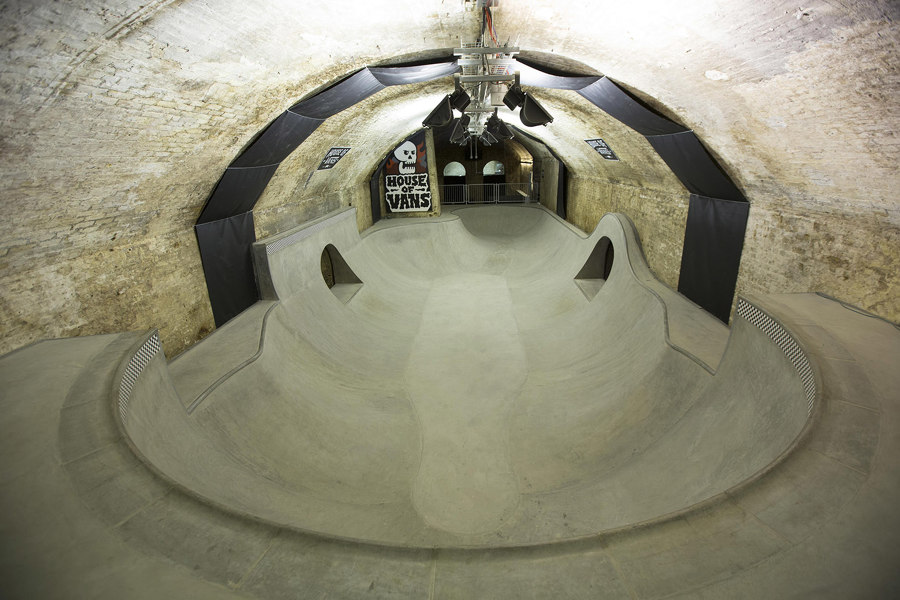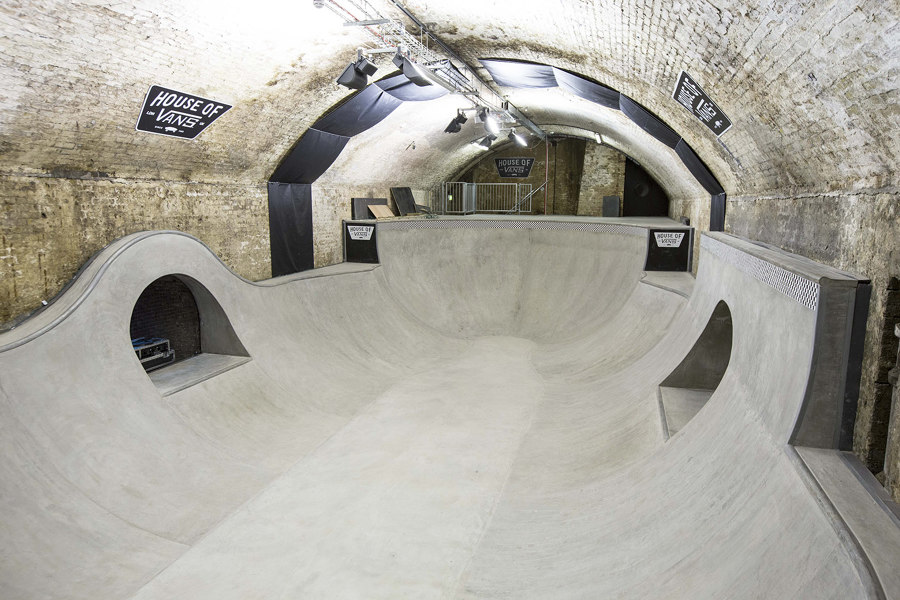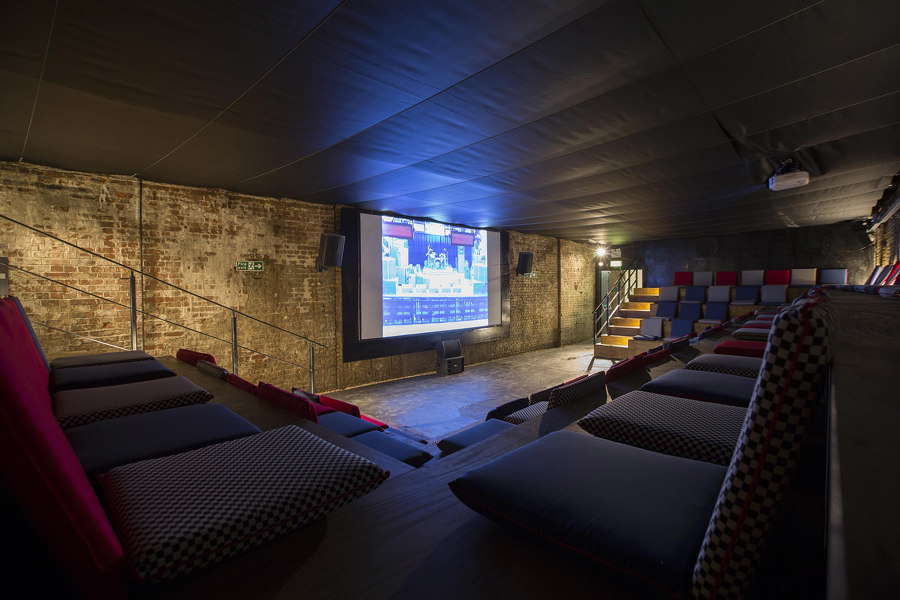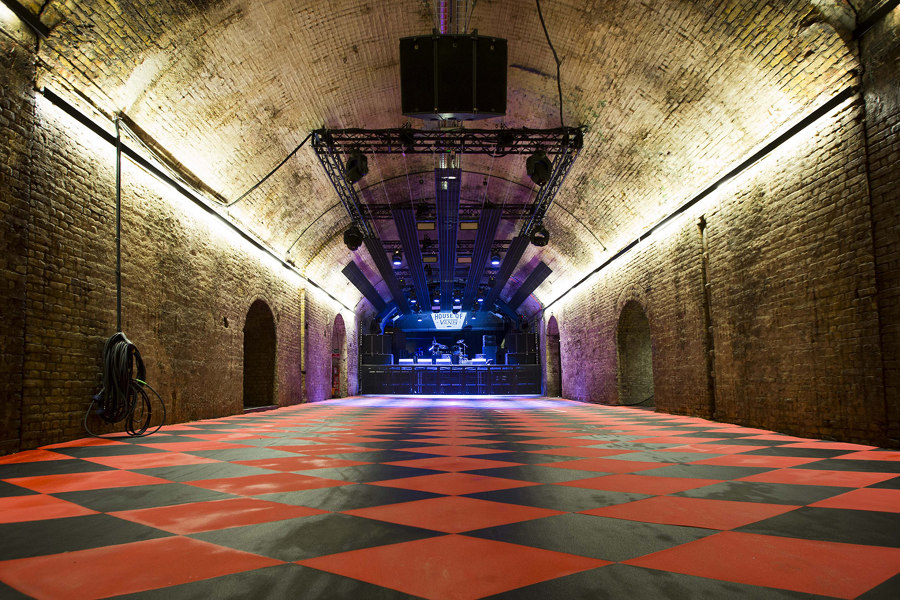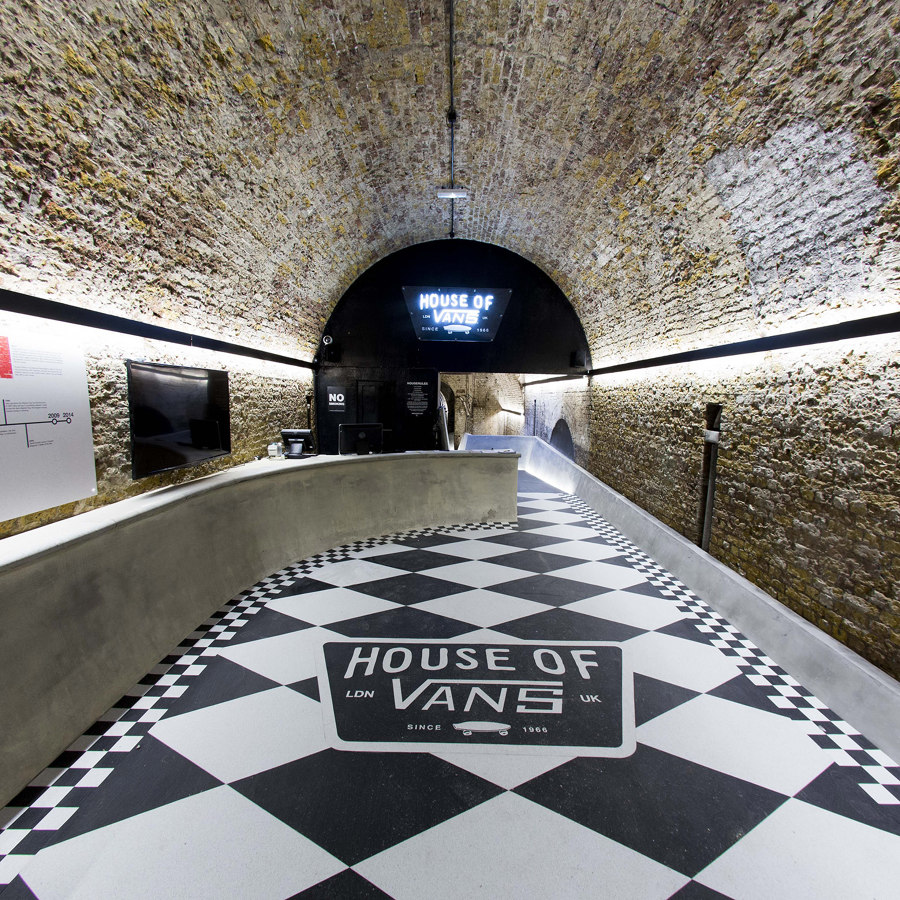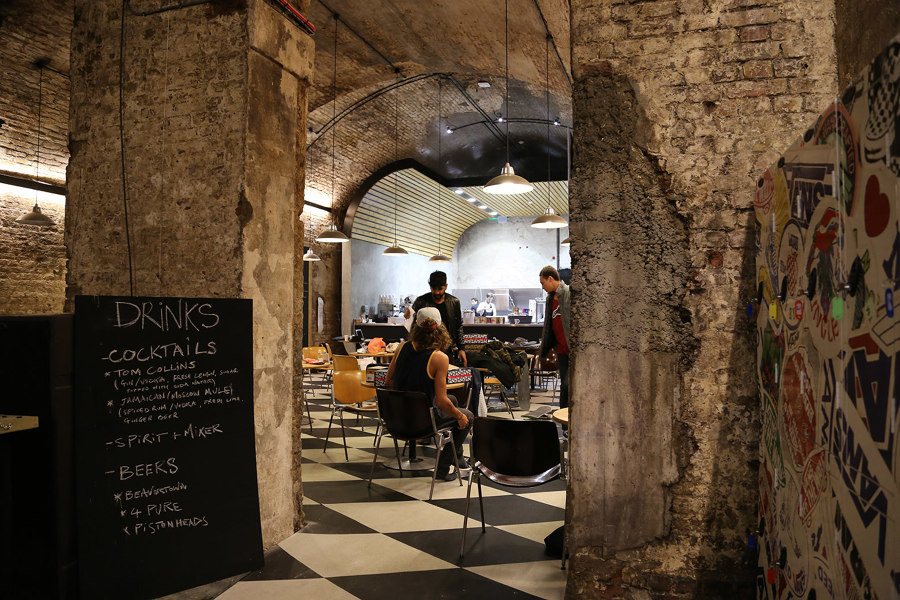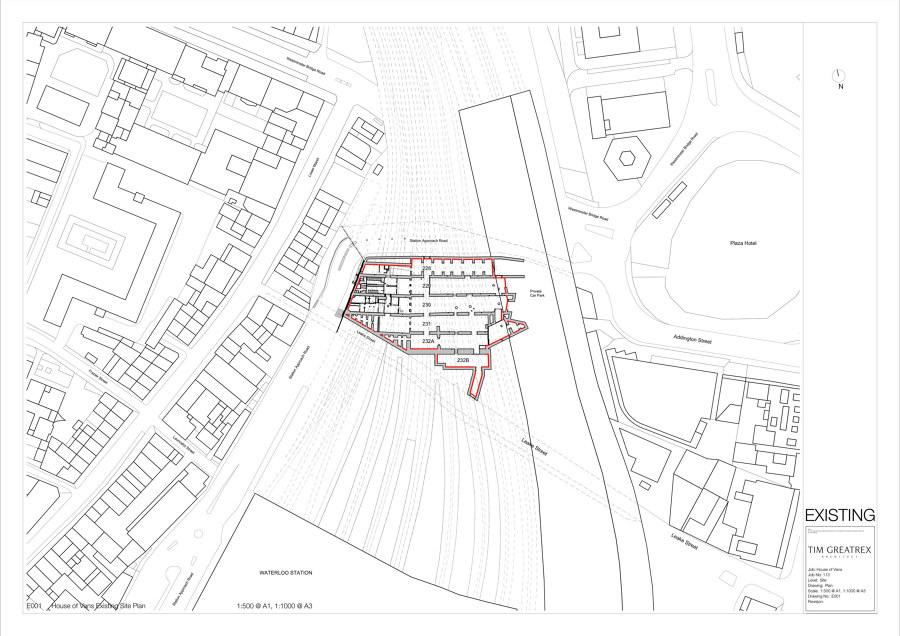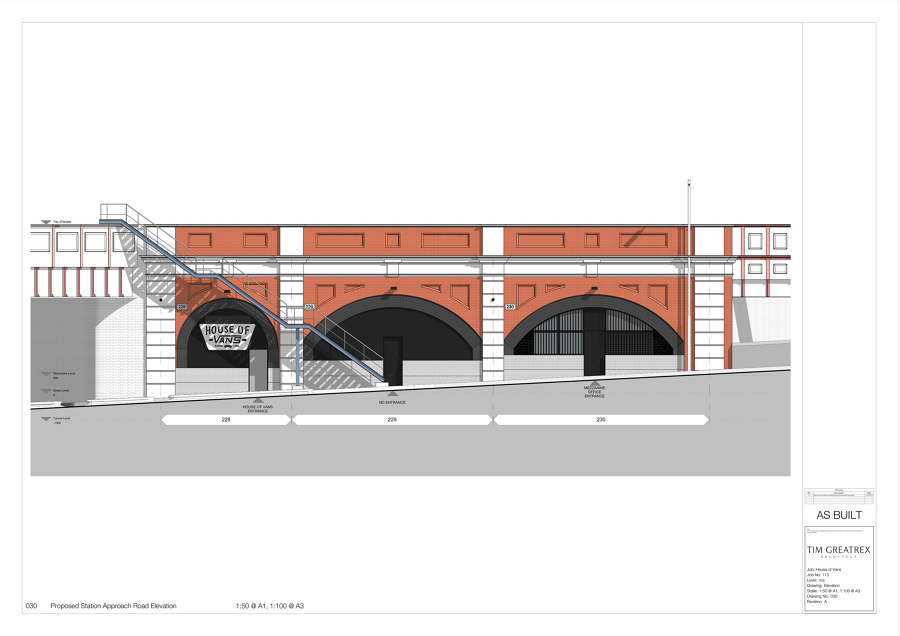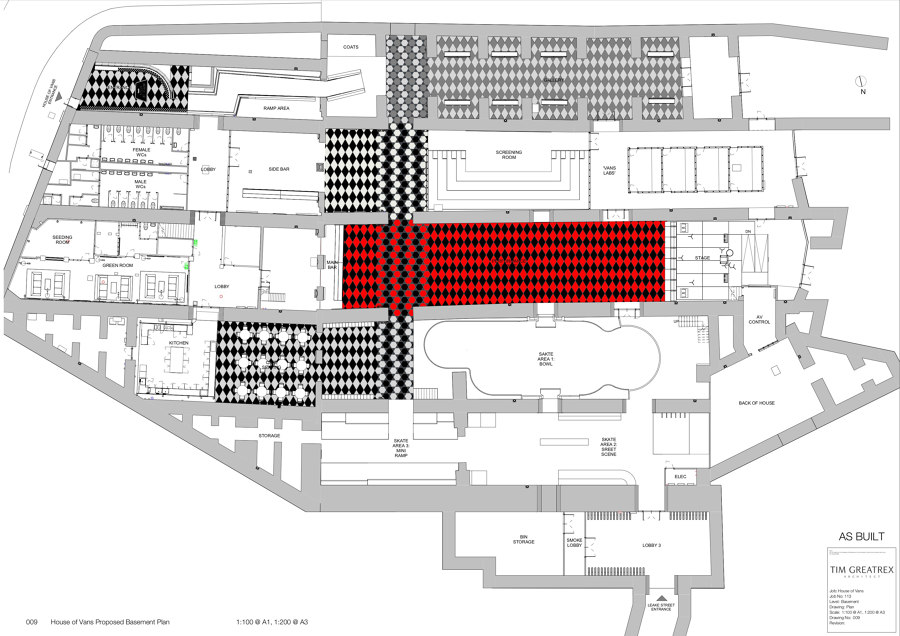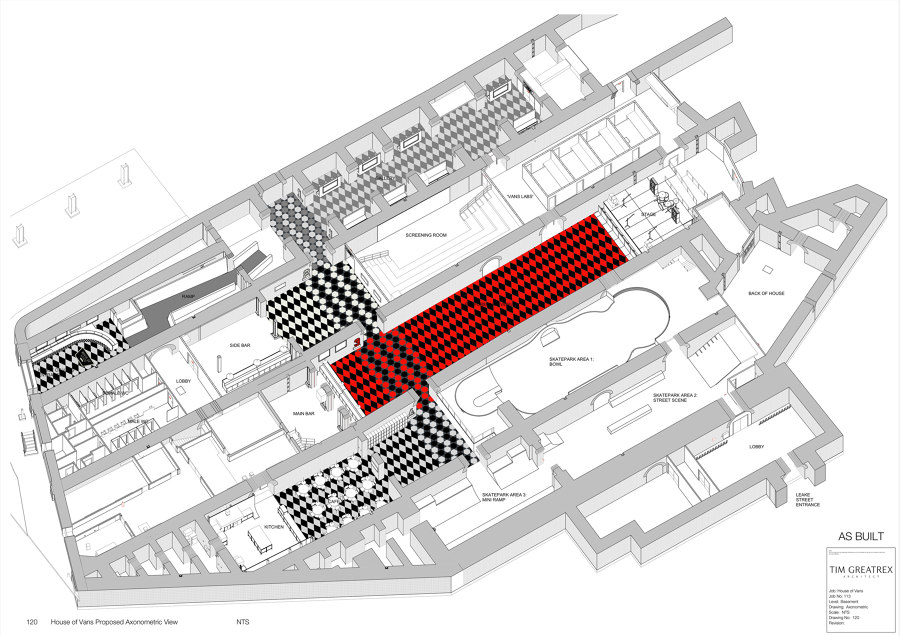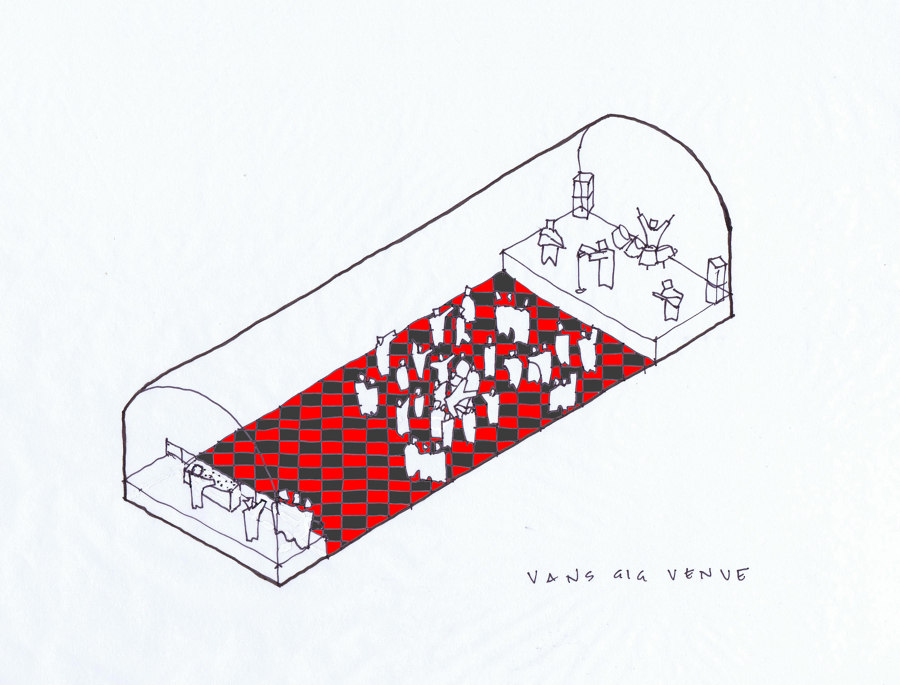The House of Vans London is the recently completed project by designers Pete Hellicar and Tim Greatrex, together with Kat Mackenzie and Henry Clay (Black Sparrow Presents) - the project management team for the House of Vans London.
The House of Vans London is a new mixed use creative venue for Vans enthusiasts and those interested in skateboarding culture. It has been established as a place to participate in the cultural lineage of skateboarding that has defined the Vans brand since 1966, combining skateboarding, art, film and music. The new venue includes an art gallery, ‘Vans labs’ creative spaces, screening room, live music for 850 people, a premium café, numerous bars and a three tier indoor concrete skate park. It is the largest permanent venture by Vans globally and the first European edition of the House of Vans, following the first in Brooklyn NY back in 2010.
Black Sparrow Presents (http://www.blacksparrowpresents.com) were tasked by Vans with orchestrating every aspect of the delivery of the House of Vans London, and as a long-time partner of Vans they provided a unique understanding of the brand and culture of skateboarding and fashion. With a vast experience of delivering large scale events for Vans they were well placed to oversee the creation of the House of Vans London.
Black Sparrow Presents approached professional skateboarder and designer Pete Hellicar (http://www.hellicarandlewis.com/) as the obvious choice to design the new underground skatepark and mixed use venue for Vans. Pete immediately joined forces with architect Tim Greatrex (http://timgreatrex.com/) to provide a unique partnership for the design and delivery of the new London venue. Pete and Tim also worked closely with professional skateboarder and designer Marc Churchill (Line Skateparks) who designed specifically the form, layout and the technical delivery of the concrete skatepark.
The House of Vans London sits within the 150 year old brick arches of the railway lines heading out of Waterloo station and next to London’s famous graffiti street, Leake Street. The site was previously used by the Old Vic Theatre. The area of the site is approximately 2,500 square metres and contains 5 separate long tunnel spaces. Due to the site being located within the historic arches of the railway lines above, restrictions were clearly set to disallow any form of structural fixing or disturbance to the existing brickwork – the irony was not missed with Vans ‘Off the Wall’ having occupied the site. The collaboration between Pete and Tim provided a thorough understanding Vans and the culture of skateboarding but this also sparked ideas and discussions on how to utilise the brief and the distinctive site to best effect.
The requirement from Vans was to provide a cultural hub for skateboarding, art, film and music. Utilising the layout of the tunnels, the site was delineated into the four main functions of the brief so that each were housed within a specific tunnel. They were separated into the following: a tunnel for art - a gallery with artist’s labs to create and display art exhibitions; a tunnel for film - a cinema and screening room; a tunnel for music - an 850 capacity gig venue; and a tunnel for skateboarding - a skatepark for all levels of skateboarding ability. The overall aim was to create a space that incubated creativity. Concept discussions between Pete and Tim led on to the linking of skateboarding and architecture and how in particular a skateboarder samples the environment he is about to ride.
This was incorporated into specific design interventions of the site for example the main entrance counter, the transitioning ramp into the space, the skatepark areas, the cinema seating and the café kitchen enclosure - all incorporate elements of skateboarding forms. These re-appropriated forms are influenced as far back from the origins of skateboarding from California which includes the citywide rudimentary forms of concrete banks and transitions, and from the early years of skateboarding within vacant swimming pools and large concrete pipes. The entrance counter takes the form of a swimming pool section, complete with pool coping stones and a ‘love seat’. The entrance descending ramp has concrete banked sides rising from a point to a full wall face and acts as an enticing surface to skateboard, whilst the café/kitchen enclosure form reflects the large scale concrete water pipes skated in the US. These elements were used to enliven the visitor and to create a sense of tension with the skateboarder who would want to ride these forms but are disallowed.
The plan for the skatepark was for it to accommodate three tunnel spaces to allow for varying layouts and abilities. The main space is the concrete ‘bowl’ predominantly for professional use, the second area is the ‘street scene’ for medium ability and the third is the ‘mini ramp’ skate park area for beginners or relaxed users. The five separate tunnels of the site are unified with the large and impressive rubber floor. The iconic sole of the Vans shoe inspired the layout of the hexagon and diamond pattern, with the strip of hexagons of the sole made to align with an enfilade of arches to delineate a main axis and corridor through the Venue.
Rubber was the obvious choice of material for the floor as it is the material for the Vans shoe and the core material of the original Vans Doren Rubber Company. It was also chosen for its durability, natural resistance to water (appropriate for the site), it’s contrasting to the raw brickwork of the space, and recyclable at the end of the project. The choice of durable yet reusable/recyclable materials was very important to the designers and the client. The underlay for the rubber floor is made of modular plastic tiles which at the end of the project can be dismantled, packaged up, and then used on another project. The other benefits of recycled rubber are its resistance to slip in the damp environment; its ability to be (water jet) cut precisely to the intricate geometric shapes required and can also be provided in a range of colours for visual guidance through the space. The rubber floor provides a clean and comfortable surface but at the same time visually creates a strong contrast to the raw and textured brick walls and vaulted ceiling.
Due to the underground nature of the site it was important to light the space sufficiently for use whilst also elegantly expressing the form of the tunnels. Long linear strips of warm light were used throughout the tunnels, positioned at the intersection of the brick wall and the beginning of the brick arch, to graze the brickwork to create a dramatic cathedral like space.
Neon lighting was also employed in the space, as it seemed appropriate within the subterranean environment. The branded neon signs create evocative focal points within the space – at the entrance, bars, stage and within the green room.
The skatepark was also an important lighting consideration and challenge as skateparks are usually outdoors. Even illumination had to be given to all surfaces so to not hinder the skateboarders use. The use of outdoor metal-halide flood lighting directed up to reflect down off the vaulted ceiling provided the non-glare high surface even illumination for professional use, but also emphasises the beautiful brick ceiling to visitors. Pendant lights hang low over the café tables to create a sense of intimacy to bring down the scale within the larger space and an enfilade of illuminated arches and bays was created to encapsulate the gallery space. Legend US skateboarders Tony Alva and Christian Hosoi both commented how the lighting of the skatepark and the rest of the spaces achieved a highly functional and beautiful result.
The House of Vans London embodies the Vans brand and the culture surrounding it. Another of the key concepts for the space was to create shrines to everything Vans; a shrine to Vans shoes – the displays of vintage memorabilia; a shrine to skateboarding – the skatepark; a shrine to art – the Vans labs and gallery; a shrine to music – the stage and gig tunnel; a shrine to food – the café and kitchen; a shine to alcohol – the bars, a shrine to ‘rock and roll’ – the green room, and lastly a shrine to the tunnels and their previous use as the Old Vic Theatre – the murals and markings of previous times are proudly displayed within the House of Vans.
As well as the physical design of the space, the activation of the space was a key requirement to generate an exciting, vibrant, educational and creative space. From the outset, the intention was to allow the space to evolve for itself; letting visitors self govern and take ownership. Broadcasting became one of the key ways to activate the venue, through many forms of social media, broadcasting images and live camera feeds of activity within the music venue and skateparks for example. Interest can be generated by reaching out through the House of Vans online presence to inspire people to come down and visit the site. This live Internet broadcast also connects Vans London to the global Vans community – creating live links between London and Brooklyn, NY and to other Vans outlets and events around the rest of the world.
Design team:
Designers: Tim Greatrex Architect + Hellicar Studio
Event Production And Construction Manager: Black Sparrow Presents, Kat Mackenzie, Henry Clay
Av, Staging And Project Management: Zero Degrees
Skatepark Design: Line skateparks
Skatepark Construction: Pete Warboys
Electrical + Lighting Contractor: HPES Electrical
Rubber Flooring: Dalsouple DRF, Tac fast
Joinery And General Builder: Illiyan Petrov
Joinery: Illiyan Petrov
General Builder: Illiyan Petrov
Electrical & Lighting Contractor: HPES Electrical
